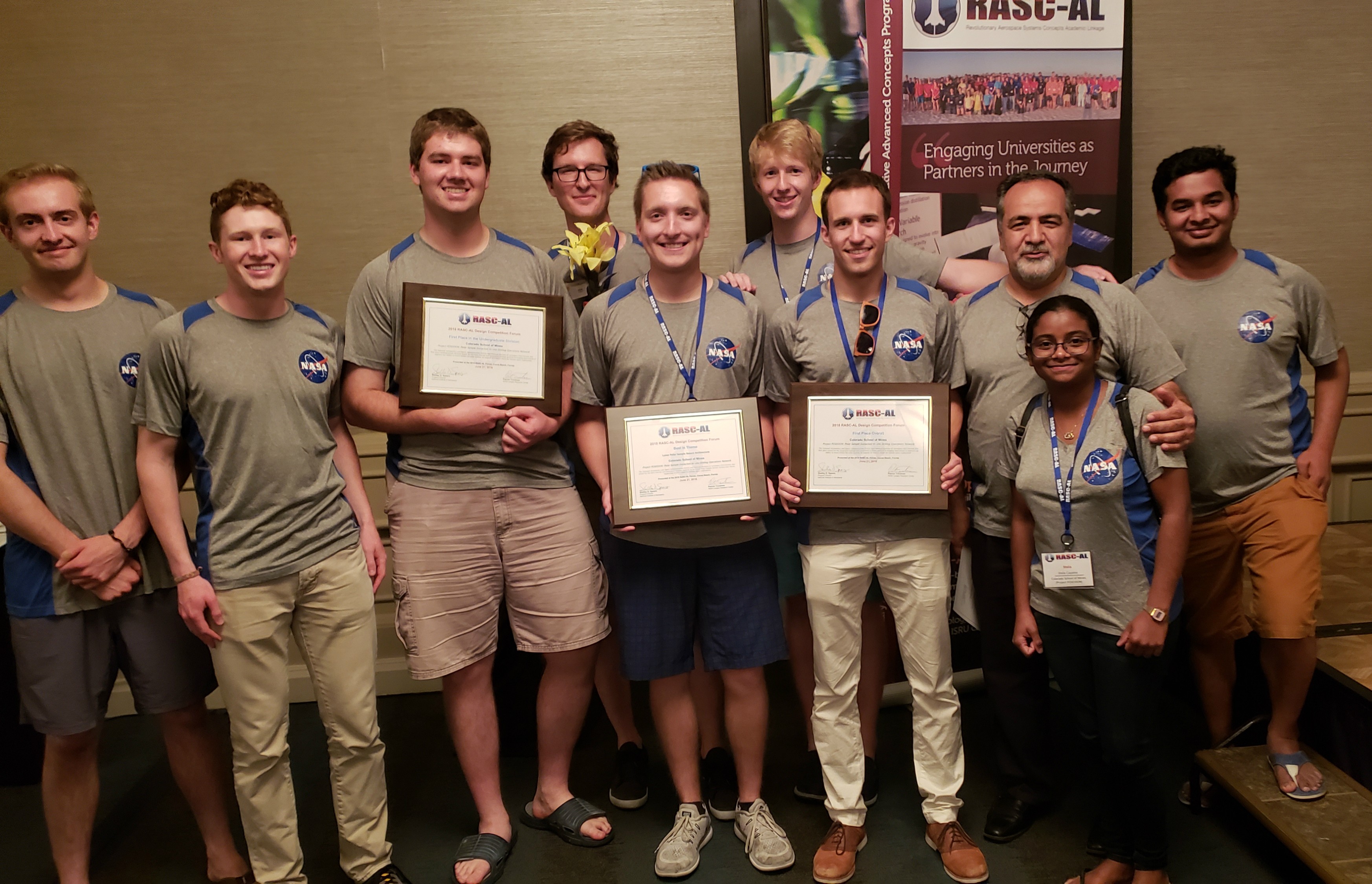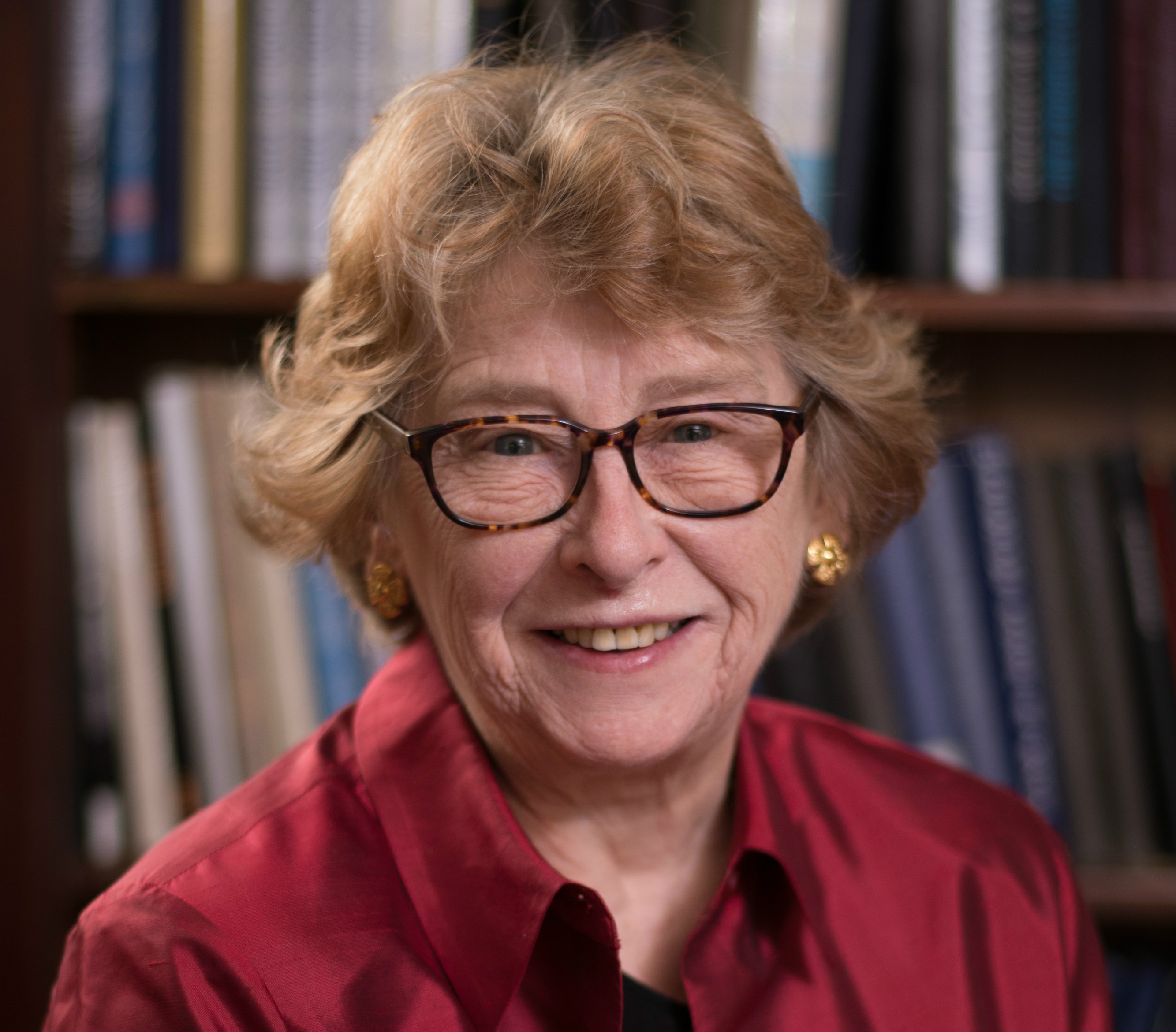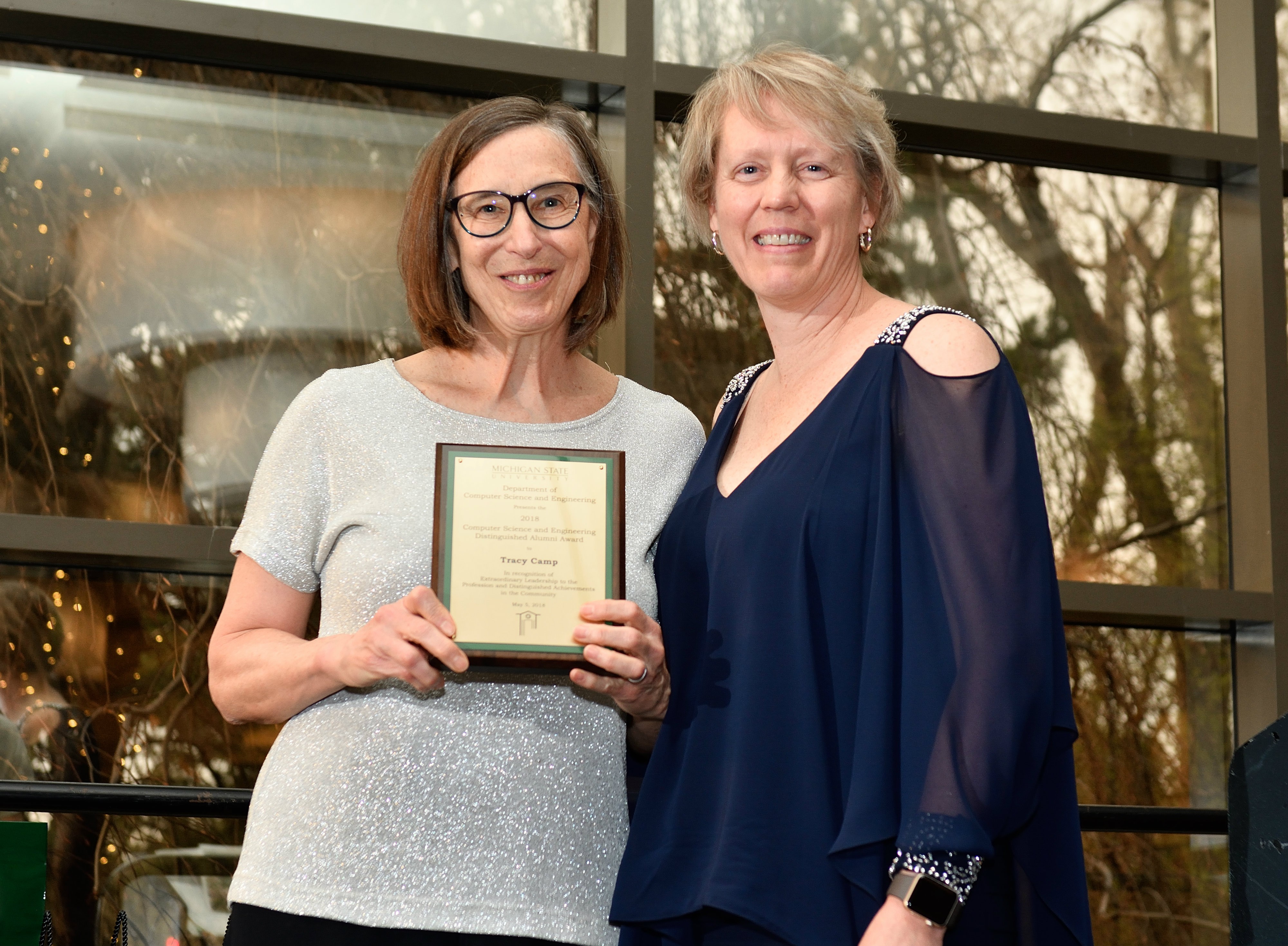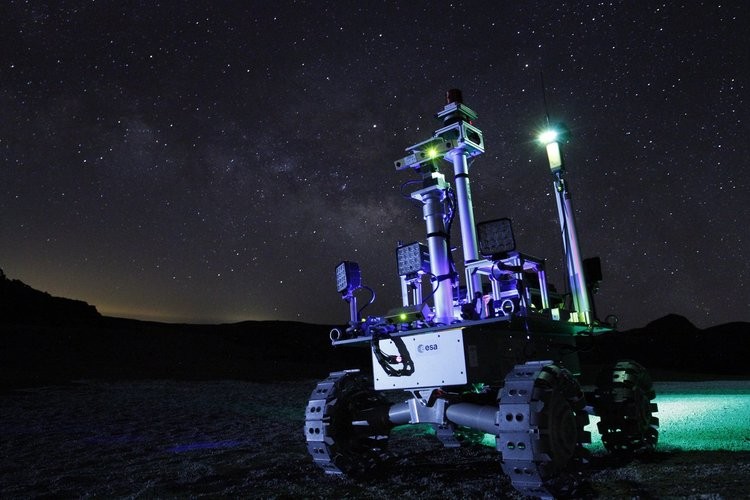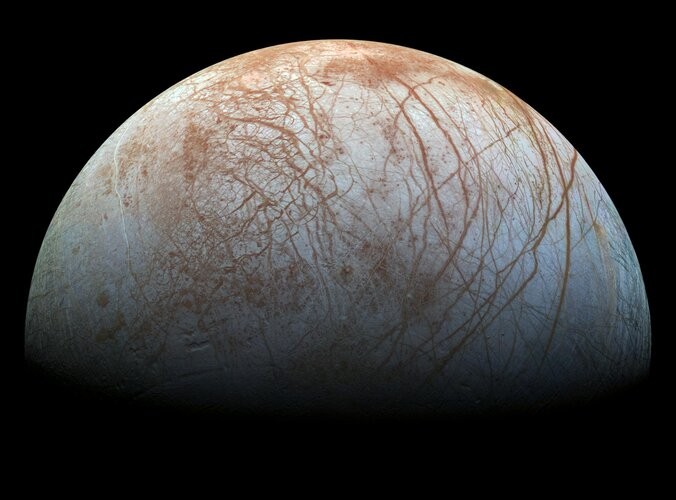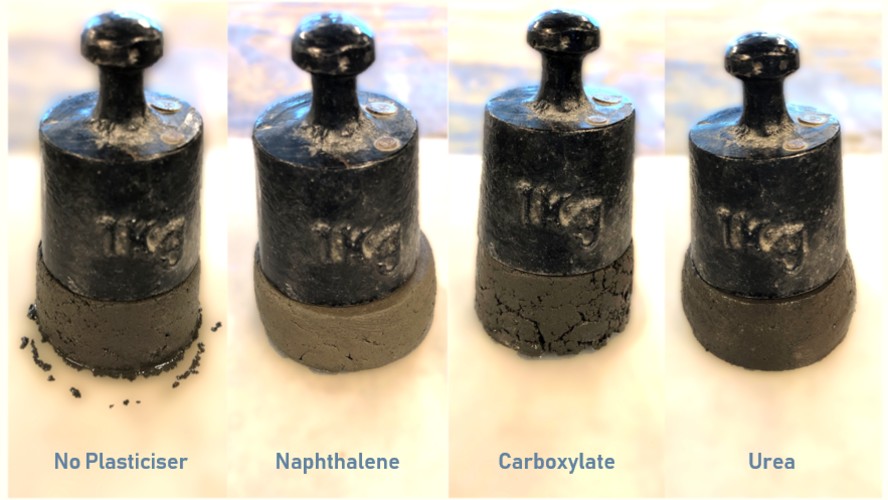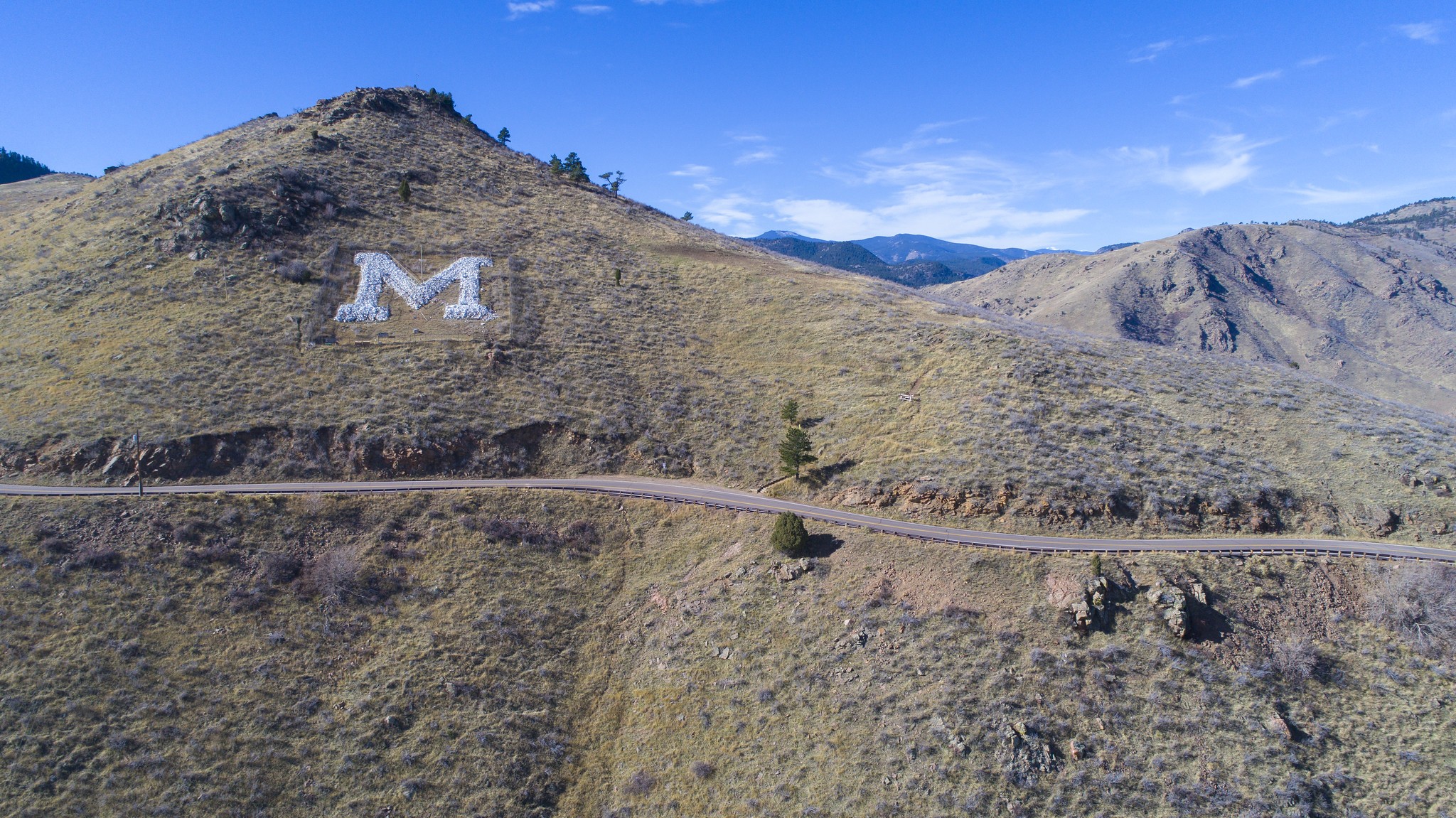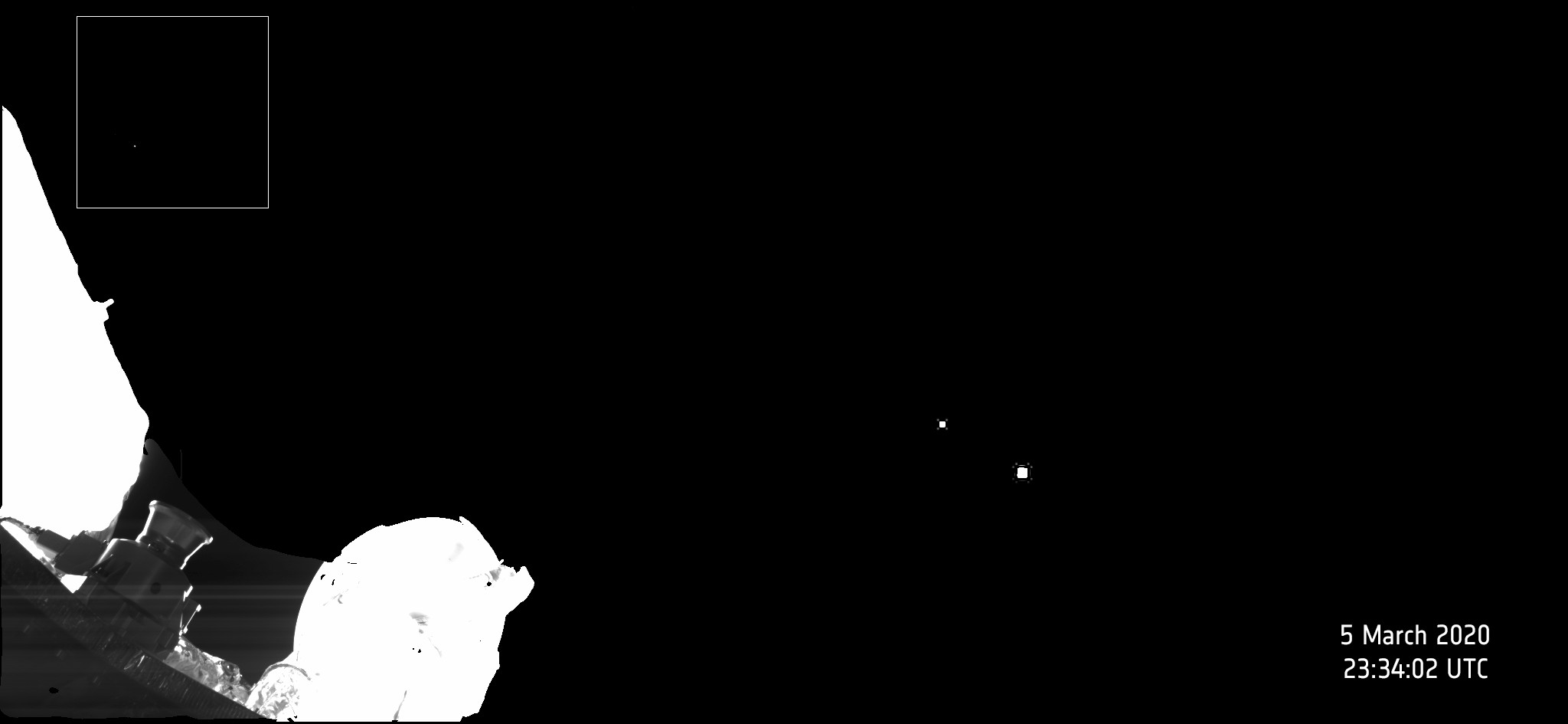Science
-
7 years ago
Abbud-Madrid talks space resources with CPR's Colorado Matters
MinesNewsRoomAngel Abbud-Madrid, director of the Center for Space Resources at Colorado School of Mines, recently appeared on Colorado Public Radio's Colorado Matters to discuss space resources and the new graduate program launching at Mines this week. From the story: It may sound like science fiction, but the new space mining program at the Colorado School of Mines is all fact. The university's Center for Space Resources launches the world's first Ph.D. and Master’s degrees in space mining this month. The center's director Angel Abbud-Madrid talked to Colorado Matters about the futuristic program. Space mining has long been of interest for the School of Mines, which first held a conference on this topic in 1999. Abbud-Madrid sees mining asteroids and the Moon as the logical conclusion to humanity's pursuit of new materials. The first mining probes won't blast off into space for another five or eight years, but the School of Mines is hoping to ready students for those jobs ahead of time. To hear the full interview, click on the link below.
Read More -
7 years ago
Abbud-Madrid discusses space resources program with Mountain West News Bureau
MinesNewsRoomThe space resources program launching at Colorado School of Mines this fall was the subject of a recent public radio story produced by the Mountain West News Bureau, a collaboration between Wyoming Public Media, Boise State Public Radio in Idaho, Yellowstone Public Radio in Montana, KUER in Salt Lake City and KRCC and KUNC in Colorado. Angel Abbud-Madrid, director of the Center for Space Resources, spoke with reporter Rae Ellen Bichell. From the story: Starting this fall, our region will host something new: a graduate program in space resources. “This is the very first program in the world that is focused on space resources,” says Angel Abbud-Madrid, the director of the Center for Space Resources at the Colorado School of Mines. He says other schools may have a few classes here and there but not a full-fledged graduate program. Coursework will touch on everything from the legal issues of mining an asteroid or the moon to finding and recycling basic materials for fuel and survival.
Read More -
7 years ago
Mines scientists contributing to NASA Mars InSight mission
MinesNewsRoomThe NASA Mars InSight Lander is en route to the Red Planet and two Colorado School of Mines scientists are among those eagerly awaiting its arrival in late November. Paul Morgan, senior geothermal geologist at the Colorado Geological Survey, and Ebru Bozdag, assistant professor of geophysics, are members of the science team for the international research undertaking, the first mission dedicated to seeking geophysical information about another planet. "There have been many rovers and missions to Mars, but they've concentrated on understanding the surface geology," Morgan said. "We can learn a lot from that, but the InSight mission is focusing entirely on the interior of the planet." To do that, the InSight lander is equipped with three pieces of scientific equipment: a seismometer (SEIS), a Heat Flow and Physical Properties Probe (HP3) and the Rotation and Interior Structure Experiment (RISE). Morgan worked on the heat probe, serving as one of three U.S.-based co-investigators on the project. Designed in the U.S. and built in Germany, the probe will hammer 16 feet into the Martian soil, or regolith, to measure the heat coming from the planet's interior. "Heat is the driving energy for tectonics on Earth. Mars doesn't appear to have plate tectonics, but it does appear to have had volcanism very recently," Morgan said. "We want to know where it is in that stage." The hammering process will take a month to six weeks, as the probe pauses every half meter to measure the thermal properties. Once it reaches its final depth, the probe will track temperatures for roughly one Martian year, or 687 Earth days, in order to get an accurate measurement, he said. An expert in geothermal energy on Earth, Morgan helped design the probe with engineers at the NASA Jet Propulsion Laboratory (JPL) in California. A major part of his role was conducting terrestrial experiments, in remote areas of the Upper Arkansas Valley in Colorado, to try to simulate the conditions the probe will likely encounter on Mars and help validate the computer models developed at JPL. "There are a lot of things that you may not think about instantly, but when you're designing something and you only have one chance at the experiment you have to think about every possible thing that could happen," Morgan said. "As I've been doing this for 40 years, I've measured just about everything that can happen on Earth. I don't know everything that could possibly happen on Mars. But with colleagues who have worked on planets and engineers who have designed just about anything that can happen on planets, we get together and use everyone's expertise. It's a collaborative effort." The same goes for the seismometer, which will record "marsquakes" and other seismic disturbances in hopes of answering questions about the crustal dichotomy between the southern and northern hemispheres, the size of Mars' core and the relationship between that core and the planet's lack of magnetic field, Bozdag said. "We have no idea what kind of data we'll get from Mars — it's the first time we're hopefully going to receive meaningful seismic signals from a planet other than the Earth and the Moon," she said. "Seismology is our primary tool to see planets' interiors. For Earth, we use earthquakes. For Mars, we'll be using marsquakes if there is enough seismic activity, meteorite impacts and other seismic sources, such as dust devils." A global seismologist, Bozdag got involved in the InSight project while she was a postdoctoral researcher at Princeton. When she moved to the University of Nice in France, she was also supported by the primary investigator for the seismometer, Philippe Lognonnè at the Institute of Earth Physics of Paris, to continue her work on 3D seismic wave simulations of Mars. Starting this fall, a Mines graduate student will be partially funded by InSight to work full time on Mars simulations and observed data under the direction of Bozdag in collaboration with the InSight team. Bozdag joined the Mines Geophysics Department in 2017. "What we'd like to do is run some high-resolution simulations globally and also focus on some specific craters and mountain areas to see the effect of the 3D structure on Martian waveforms," Bozdag said. "Our goal is not just estimating what kind of data we'll be getting from Mars. It's also to try to identify some real seismic signals from the real data." The data should help scientists better understand not only Mars but also our own home here on Earth, she said. "Mars is like an early version of the Earth," Bozdag said. "If we can understand what's currently happening on Mars, it will also help us understand the past of Earth and how our planet, together with our solar system, has been evolving over time." The InSight Lander, which launched from California's Vandenberg Air Force Base on May 5, is set to arrive on Mars on Nov. 26. Day-to-day science activities will begin about 30 days into the mission. For more information about the InSight mission, go to mars.nasa.gov/insight. Image credit: Renderings courtesy of NASA CONTACTEmilie Rusch, Public Information Specialist, Communications and Marketing | 303-273-3361 | erusch@mines.eduMark Ramirez, Managing Editor, Communications and Marketing | 303-273-3088 | ramirez@mines.edu
Read More -
7 years ago
Center for Space Resources researchers discuss moon mining with Space.com
MinesNewsRoomResearchers from the Center for Space Resources at Colorado School of Mines were recently featured in a Space.com article about mining the moon for water ice. Mines hosted the 9th joint meeting of the Space Resources Roundtable (SRR) and the Planetary & Terrestrial Mining Sciences Symposium (PTMSS) last month. Angel Abbud-Madrid, director of the Center for Space Resources, and graduate student Hunter Williams were quoted in the article. From the article: "We're at the tipping point of a new era in space commerce, where private industry, NASA and international collaborators are joining together to realize the dream of launching humanity into the solar system," said Hunter Williams, a Colorado School of Mines researcher. "There has never been a more exciting time for furthering science, turning a profit or promoting international cooperation than right now." Williams, along with Chris Dreyer and George Sowers, also of the School of Mines, detailed a low-cost mission to discover the extent of water resources on the moon, as well as a newly developed extraction technique, "thermal mining," that transforms lunar water ice into rocket fuel.
Read More -
7 years ago
Abbud-Madrid interviewed by U.S News & World Report about lunar resources
MinesNewsRoomAngel Abbud-Madrid, director of the Center for Space Resources at Colorado School of Mines, was recently interviewed by U.S. News & World Report about growing interest from space agencies around the world in potential resources on the Moon. From the article: "It's very exciting to see countries like India, China, Japan, Russia, even the South Koreans, and of course the U.S. are going to be sending probes to the moon to look for resources," says Angel Abbud-Madrid, the director of the Space Resources Program at the Colorado School of Mines. "There's a realization that space resources are the next step in terms of the use of space for future exploration and for the new space economy."
Read More -
7 years ago
Mines team wins NASA RASC-AL deep space competition
MinesNewsRoomA team of Colorado School of Mines students won the grand prize at NASA's collegiate deep space competition, beating out 13 other undergraduate and graduate student teams from around the U.S. and the world. Judges at the 2018 Revolutionary Aerospace Systems Concepts - Academic Linkage (RASC-AL) competition awarded Project POSEIDON – short for Polar Sample Extraction In-situ Drilling Operations Network – first place overall, first place in the Undergraduate Division and Best In Theme. POSEIDON proposed a reusable system of lunar rovers equipped with drills to take samples of the regolith, or moon dust, and then return them to NASA's future deep space gateway for analysis back on Earth. Runner up in the competition was the University of Maryland TERPS: Trans-Mars Exploration Reusable Propulsion Stage. The top two teams won a travel stipend to present their research at the 2018 American Institute of Aeronautics and Astronautics (AIAA) Space and Astronautics Forum and Exposition (SPACE Forum) in Orlando, Florida, on Sept. 17. "This is a win for Mines and a win for space resources," said team leader Adam Marcinkowski, a junior majoring in mechanical engineering. "We were going against teams that were dealing with rocketry or orbital mechanics or space habitats – traditional aerospace areas. For a space resources-focused team to win the entire competition affirms the importance of space resources in the future of human exploration of the solar system." "Space is more than just rockets," he said. Teams in the competition could choose from four project categories – reusable hybrid propulsion stage, artificial gravity, propellant resupply capability and lunar polar sample return architecture. Their proposed conceptual missions were judged on their 15-page technical papers, oral presentations and poster presentations. POSEIDON, building on Mines' 20-plus-year history in space resources, selected lunar polar sample return architecture. Their mission's rovers would target the permanently shadowed regions of the moon, where scientists believe there could be as much as 1 billion metric tons of water ice. More specifically, the team chose the Cabeus crater, where a past mission crashed a rocket stage and detected water and hydrates in the resulting plume. That water could be used to make rocket propellant to fuel deep space missions to Mars and beyond. Marcinkowski credited the visual aspect of their presentation for setting them apart from the rest of the competition. Teammate Ben Burckel built 3D animations using Blender, a free and open-source 3D creation suite he has been dabbling in for years. "We had a compelling story, we had a vision, sending humankind back to the moon and invading it with an army of robots," Marcinkowski said. "They could see the transfer vehicle land and deploy the rovers. They could see the rovers deploy their solar arrays and beam energy down into the crater. They could watch the drilling rover go through the whole drilling sequence." Advising POSEIDON was Jamal Rostami, associate professor and Timothy J. Haddon/Alacer Gold Chair in Mining Engineering. Rounding out the team were Stela Cayatte, Jackson Crutcher, Nam Do, Jacob Drozdowicz, Bryce Frazee, John Fuller, Deep Joshi, Sepideh Kianbakht, Sergey Koryakin, Daniela Machnik, Grant McHargue, Kevin Miller, Patrick Ng, Jared Olson, David Shay, Paul Stanton, Nathan Vermeer and Nicholas Wagner. "The Mines students working on the lunar ice core retrieval challenge showed the value of a strong science/engineering background, innovative and out-of-box thinking, progressive planning, being up-to-date with available technology and computer skills in solving very complex and critical problems. They combined these skills with their hard work, good coordination and teamwork, individual commitment to delivering on the work they were assigned to do," Rostami said. "The amazing outcomes were beyond what we had expected, and I commend the team for the achievement." Other schools sending teams to the finals included Georgia Tech, Virginia Tech, Stevens Institute of Technology, Columbia University, Pennsylvania State University, University of Southern California, University of Illinois, University of Minnesota and Drexel University. A second Mines-affiliated team, PORG Station (Planetary Orbiter: a Rotational Gravity Station), competed in the artificial gravity category. Michael Szostak, a senior majoring in mechanical engineering, led the PORG team, which was made up of former NASA Langley interns whom he recruited to take part in the competition. "After many years of participating in the NASA RASC-AL competition, it was very exciting to see our team establish itself as the clear winner in not just one, but several categories," said Angel Abbud-Madrid, director of the Center for Space Resources at Mines. "This multidisciplinary student group presented an extremely well-articulated and complete plan to robotically access soil and ice samples from the lunar poles. This first-prize award goes to show that in both research and academic programs, Mines is undoubtedly a world leader in the space resources field." CONTACTEmilie Rusch, Public Information Specialist, Communications and Marketing | 303-273-3361 | erusch@mines.eduAshley Spurgeon, Editor, Mines Magazine | 303-273-3959 | aspurgeon@mines.edu
Read More -
7 years ago
Mines students tackle future of space exploration at RASC-AL
MinesNewsRoomA deep space gateway near the moon could one day serve as a staging point for spacecraft carrying humans to Mars and beyond. NASA proposed the concept last year and two student teams with ties to Colorado School of Mines are now working to develop the best conceptual mission to help NASA take advantage of that future gateway and deep space transport systems. Project POSEIDON (Polar Sample Extraction In-situ Drilling Operations Network) and PORG Station (Planetary Orbiter: a Rotational Gravity Station) are among the 16 collegiate teams that made the finals of the 2018 Revolutionary Aerospace Systems Concepts – Academic Linkage (RASC-AL) competition, set for June 18-21 in Cocoa Beach, Florida. Undergraduate and graduate student teams could choose from four project categories – reusable hybrid propulsion stage, artificial gravity, propellant resupply capability and lunar polar sample return architecture. The top two winning teams overall will receive a travel stipend to present their concepts at an upcoming aerospace conference, such as American Institute of Aeronautics and Astronautics (AIAA) Space 2018. “We’re solving real problems that the space industry faces. This is the next step for space resources and it’s cool to have a part in designing the future of what’s going to be such a huge component of humankind’s future in space,” said Adam Marcinkowski, a junior studying mechanical engineering and team leader of Project POSEIDON. POSEIDON tackled the lunar polar sample return architecture challenge, proposing a reusable system of lunar rovers equipped with drills to take samples from the regolith, or moon dust, and then return them to the deep space gateway for analysis back on Earth. The rovers would target the permanently shadowed regions of the moon, where scientists believe there could be as much as 1 billion metric tons of water ice. More specifically, the team chose the Cabeus crater, where a past mission crashed a rocket stage and detected water and hydrates in the resulting plume. “Moon mining follows the same process as mining on Earth. With any terrestrial mining operation, at first, you're going to need to prospect it. We've already done that using satellites on the moon with promising results. The next step is to send someone in to get physical samples. What's the actual concentration on this site? Is it high enough for this mine to be worth the cost? It’s hard to know how much of the ore you want is present without taking a physical sample. That’s our next step on the moon,” Marcinkowski said. Marcinkowski and his teammates entered the RASC-AL competition as an extracurricular activity, working on the project outside of their classes. Team members come from a variety of disciplines, including mechanical engineering, electrical engineering, engineering physics, petroleum engineering, mining engineering and geophysics. Advising the team is Jamal Rostami, associate professor and Timothy J. Haddon/Alacer Gold Chair in Mining Engineering. Team members are Ben Burckel, Stela Cayatte, Jackson Crutcher, Nam Do, Jacob Drozdowicz, Bryce Frazee, John Fuller, Deep Joshi, Sepideh Kianbakht, Sergey Koryakin, Daniela Machnik, Grant McHargue, Kevin Miller, Patrick Ng, Jared Olson, David Shay, Paul Stanton, Nathan Vermeer and Nicholas Wagner. “In terms of extraction engineering, that’s where we’re going to shine,” Marcinkowski said. “Colorado School of Mines is the top mining school in the world – or solar system, technically.” The other team with a connection to Mines, PORG Station, is competing in the artificial gravity category. Michael Szostak, a senior majoring in mechanical engineering, is the team leader and the only Mines student on the team, which is made up of former NASA Langley interns whom Szostak inspired to take part in the competition. Joining Szostak are Anthony Hollywood at Georgia Tech, Riaz Husain at University of Texas-San Antonio, Ethan Krings at University of Nebraska and Lucia Tian at University of Virginia. Advising the team is Mines Mechanical Engineering Professor Greg Jackson. “It’s a learning experience every time you go through it,” Szostak said. “One of the things I really like about RASC-AL is the mission design aspect. Everyone on the team needs to know if one aspect of your design changes, it can have ramifications on other parts of the design. You could get there faster with a different engine, but then you have to carry more fuel and the launch costs increase. In order to solve that puzzle, you need to learn a lot of things.” PORG Station is proposing a dumbbell-shaped space station to transport humans back and forth from Mars. Rotation of the spacecraft – a la the movie “2001: A Space Odyssey” – would achieve the required artificial gravity. “In order to prevent things like microgravity sickness and all the health effects associated with operating in a zero-gravity environment and to keep astronauts acclimated, we need an artificial gravity station on the way to Mars – unless you pretend you’re in Star Wars and have it automatically occur,” Szostak said. At the final competition, each team will make a formal presentation to the panel of judges, as well as discuss their projects more informally during a poster session. The winners will be announced at an awards ceremony June 21. CONTACTEmilie Rusch, Public Information Specialist, Communications and Marketing | 303-273-3361 | erusch@mines.eduMark Ramirez, Managing Editor, Communications and Marketing | 303-273-3088 | ramirez@mines.edu
Read More -
7 years ago
Nelson to receive UCA of SME Outstanding Educator Award
MinesNewsRoomPriscilla Nelson, professor and head of the Mining Engineering Department at Colorado School of Mines, is the winner of the 2018 Outstanding Educator Award from the Underground Construction Association of the Society for Mining, Metallurgy & Exploration. The award, which recognizes professors and teachers who have had an exceptional career in academia and education in the area of underground design and construction, will be presented June 26 during the North American Tunneling Conference in Washington, D.C. "This award is presented to Dr. Priscilla Nelson for her contributions in the field of tunneling and her dedication to education of new generation of engineers specialized in underground construction and tunneling in the U.S. In addition, UCA recognizes her initiatives as a role model and inspiration for young female students pursuing advanced degrees in the field of tunneling," the citation reads. Nelson, who joined Mines in 2014, also serves as the associate director for education and outreach for the school's University Research Center for Underground Transportation Infrastructure, the first U.S. Department of Transportation-funded research center dedicated to underground infrastructure. She has been involved in the underground construction industry for more than 35 years. Nelson came to Mines from the New Jersey Institute of Technology where she was a professor of civil and environmental engineering following a term as provost and senior vice president for academic affairs. Prior to joining NJIT, she spent 11 years at the National Science Foundation, where she served as senior advisor to the director, and was a professor at the University of Texas at Austin. Nelson is a Distinguished Member of the American Society of Civil Engineers (ASCE), former president of the Geo-Institute of ASCE, a lifetime member and first president and Fellow of the American Rock Mechanics Association, and Fellow of American Association for the Advancement of Science (AAAS). She holds a PhD in geotechnical engineering from Cornell University and master's degrees in geology and structural engineering from Indiana University and University of Oklahoma, respectively. She received her bachelor's degree in geology from the University of Rochester. CONTACTEmilie Rusch, Public Information Specialist, Communications and Marketing | 303-273-3361 | erusch@mines.eduMark Ramirez, Managing Editor, Communications and Marketing | 303-273-3088 | ramirez@mines.edu
Read More -
7 years ago
Camp receives distinguished alumni award from alma mater
MinesNewsRoomTracy Camp, professor and head of the Computer Science Department at Colorado School of Mines, was honored with the 2018 Computer Science and Engineering Distinguished Alumni Award from the Michigan State University College of Engineering. Camp was one of eight engineering alumni honored at the 2018 Alumni Awards Banquet on May 5 in East Lansing, Michigan. The annual ceremony recognizes alumni whose significant accomplishments reflect positively on MSU and the College of Engineering. Established in 2004, the Computer Science and Engineering Distinguished Alumni Award recognizes an alumnus or alumna who has distinguished him or herself as a leader in the computer science and engineering profession through professional contributions, public service and personal accomplishments. Camp, who joined Mines in 1998, received a master’s degree in computer science from MSU in 1989. She is a fellow of the Association for Computing Machinery (ACM) and the Institute of Electrical and Electronics Engineers (IEEE) and was one of 15 experts on a National Academies of Sciences, Engineering and Medicine committee that released a report in late 2017 urging action to address the current surge in undergraduate computer science enrollments. She earned her PhD in computer science from The College of William & Mary. Other engineering alumni honored at the May 5 ceremony included: Jianchang “JC” Mao, corporate vice president of artificial intelligence and research, Microsoft Mitzi M. Montoya, Sara Hart Kimball Dean of the College of Business at Oregon State University Brad Borgman, vice president of engineering, TWT Group Prabhat Shukla, founder of Fluorotherm Polymers Inc. James Susan, president of Fishbeck, Thompson, Carr & Huber (FTCH) Darius Adamczyk, chairman and chief executive officer, Honeywell Lisa Sparrow, president and chief executive officer, Utilities, Inc. Photo credit: MSU Computer Science Professor Laura Dillon congratulates Tracy Camp for receiving the Michigan State University Computer Science and Engineering Distinguished Alumni Award in East Lansing on May 5. (Courtesy of Michigan State University) CONTACTEmilie Rusch, Public Information Specialist, Communications and Marketing | 303-273-3361 | erusch@mines.eduMark Ramirez, Managing Editor, Communications and Marketing | 303-273-3088 | ramirez@mines.edu
Read More -
7 years ago
Osgood interviewed by Fox31 Denver about Russian Facebook ads
MinesNewsRoomKen Osgood, professor of humanities, arts and social sciences at Colorado School of Mines, was inteviewed by KDVR Fox31 Denver about the 3,500 Facebook ads created or promoted by a Russian internet agency that were recently released by Democrats on the House intelligence committee. Osgood is a specialist on U.S. politics and diplomacy. His research interests include the history of propaganda and intelligence, the history of media, advertising and public relations, and U.S. political and diplomatic history.
Read More

